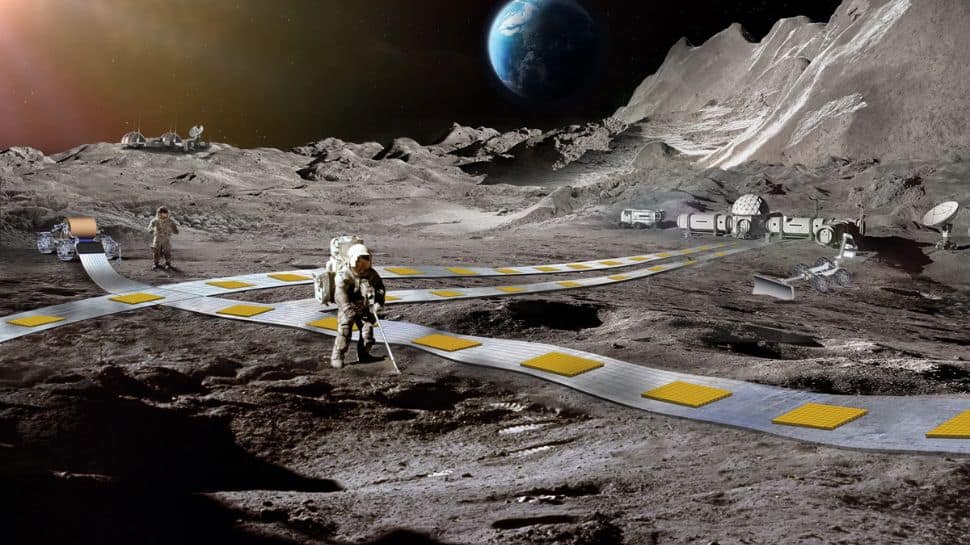NASA has recently unveiled its ambitious plan to build railway tracks on the moon. According to the US Space Agency, they are planning to build the first lunar railway system, which will provide reliable, autonomous, and efficient payload transport on the Moon. This innovative system is designed to provide reliable, autonomous, and efficient payload transport. This will provide a durable and long-life robotic transport system for the daily operations of a sustainable lunar base in the 2030s as a part of NASA’s Moon to Mars plan and mission concepts like the Robotic Lunar Surface Operations 2 (RLSO2).
NASA is planning to transport regolith mined for ISRU consumables (H2O, LOX, LH2) or construction and payloads around the lunar base and to/from landing zones or other outposts. To meet these transportation needs, NASA has proposed to develop FLOAT — Flexible Levitation on a Track.
What Is FLOAT — Flexible Levitation On A Track?
According to the official blog of NASA, the FLOAT system employs unpowered magnetic robots that levitate over a 3-layer flexible film track. It has a graphite layer which enables robots to passively float over tracks using diamagnetic levitation, a flex-circuit layer that generates electromagnetic thrust to controllably propel robots along tracks, and an optional thin-film solar panel layer that generates power for the base when in sunlight. Unlike traditional lunar robots equipped with wheels, legs, or tracks that are prone to dust abrasion, FLOAT robots with no moving parts minimize wear by levitating over the track.
As explained in NASA’s blog, “FLOAT tracks unroll directly onto the lunar regolith to avoid major on-site construction — unlike conventional roads, railways, or cableways. Individual FLOAT robots will be able to transport payloads of varying shape/size (>30 kg/m^2) at useful speeds (>0.5m/s), and a large-scale FLOAT system will be capable of moving up to 100,000s kg of regolith/payload multiple kilometres per day.”
In Phase 2 of the FLOAT (Flexible Levitation on a Track) project for lunar exploration, NASA will focus on retiring risks related to manufacturing, deployment, control, and long-term operation of meter-scale robots and kilometer-scale tracks that support human exploration activities on the Moon.
zeenews.india.com
Source link










